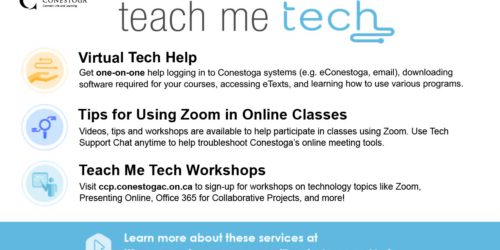
Competitive and Gamified Quizzes
Over 65% of faculty at Conestoga use competitive and gamified quizzes as learning activities. These add a bit of competition and engagement to review periods and retrieval practice activities. They help space out information so that it is revisited and recalled frequently in the semester. But what does the research say about competition, games, and learning? How do they impact student outcomes?
Research on Competition and Learning
Gamified and competitive quizzes can renew interest and curiosity in course content. This is likely because games affect us right in the endorphins, giving a positive boost to our confidence and refreshing our enjoyment of the content (Yee, 2006). In a wide literature review on game-based learning in higher education, Subhash and Cudney (2018) found that engagement and interest were the key benefits of competitive quizzes, spurring learners to study more. Mark Rober, a former NASA engineer and current inventor, discusses more in-depth how game elements connect to motivation.
Rober, M. (2018). “The Super Mario Effect – Tricking your Brain into Learning More.” by TedxTalks Penn, May 31st, 2018. Retrieved from TEDxTalks YouTube channel.
But while quizzes may help with short-term memorization, the effects may not translate into long-term learning. Competitive quizzes bring novelty to the classroom, temporarily improving student assessment performance if they directly precede a test, but this effect does not correlate with any longer-term improvements in assessment performance (Faghihi et al., 2014; Whitman, Tanzer, and Nemec, 2019; Sanchez, Langer, and Kaur 2019; Stachowski & Hamilton 2019). Competitive quizzing, while fun, does not seem to have an impact beyond the next test.
Research also cautions about which students are advantaged by gamified quizzes. Often, successful learners benefit most from the retrieval practice of competitive quizzing, while struggling learners are left behind (Sanchez, Langer and Kaur, 2019). Timed competitions and losing points de-motivate struggling learners. Failure in quizzing can confirm feelings of failure and performance anxiety. If quizzes run too quickly or energetically, many learners who need processing time may also be excluded. If questions are not read aloud at an appropriate pace, it may exclude learners with language processing or visual support needs. Fast-paced and exciting games sound great, but they often act to reinforce exclusion and anxiety for the students in need of the most support.
Timed competitions and losing points can de-motivate struggling learners. Failure in quizzing can confirm feelings of failure and performance anxiety.
Clearly, competition and extrinsic motivators can have a de-motivating impact on learners. Alternatively, learners most deeply benefit from game dynamics and mechanics such as:
- collaborative or multi-player tasks;
- discussion around gameplay/activities;
- goal-oriented focus on the obstacle presented by the task;
- retries and extra attempts to gain mastery through practice and learn from mistakes;
- feedback, often automated, on their progress.
For example, taking a “multiplayer” approach to review quizzes incorporates social elements of discussion before answering even for simple multiple-choice questions and constructs quizzing as a collaborative, thoughtful, fun, and dynamic practice experience where repeated attempts lead to increasing mastery.
Best Practices
The most directly observable benefit of gamified quizzing is improving learners’ intrinsic motivation to study (Clarke, Kehoe & Broin, 2018). The value of game-based quizzing as a learning strategy, then, can be improved if we:
- remove time limits and control the speed and excitement level of the activity;
- use new and different types of activities – evidence suggests that it’s the novelty of the game that attracts attention;
- keep the activity low-stakes and fun;
- remove point values, unless learners are in groups blended across levels of achievement;
- use near-questions (questions that are similar to test questions, but not the same);
- allow team discussion before submitting an answer;
- ask learners to debate and substantiate their choices when answers are split somewhat evenly between two options;
- give random advantages like an “extra life” or “One Quick Google” to the team that needs it the most;
- have students create and share their own review questions, learning from each other’s games, flashcards, and quizzes.
Quizzing Options to Try
Here are some well-loved, free, and available options many educators use for gamified quizzing in their courses.
PowerPoint-based Game Shows
Bring a new take on a classic trivia game by using a Jeopardy PowerPoint deck to gamify a review or test prep period. Use your best game-show presenter voice to add levity to the experience and reduce anxiety. Let learners play as pairs or small teams and track their “points.” Offer a small token or reward for teams to achieve, such as badges, treats or a late.
Mentimeter

Mentimeter is a popular questioning tool, and has the ability to build quizzes as well. Fun, gamified elements like music add to the experience. Many educators create multiple-choice or true or false check-ins. In class, open up time limits and read questions aloud for students.
Mentimeter is more diverse than other quizzing tools and is a real asset for teaching and learning throughout your courses. Use it across various purposes, including bridge-ins, check-ins, pre- and post Assessments and exit tickets to help learners approach mastery. Learn how to access your Conestoga-provided Mentimeter account.
eCampusOntario H5P Studio

Create different interactives to revise concepts or ask learners to create and share their own review materials, such as flashcards, practice fill-in-the-blanks, drag and drops or branching scenarios in the eCampusOntario H5P Studio. Search from the many available previously created sets, or make some yourself in just a few clicks. Learn more about how to get started with the eCampusOntario H5P Studio.
Quizziz

For self-paced quizzes with positive scoring and sharing potential, try out the free features of the Quizizz app. Educators and students can make quizzes and flashcards. These review tools can be built and shared among students as study and review tools before tests, midterms or exams.
References
Clarke, G., Kehoe, J., & Broin, D. Ó. (2018). The Effects of Gamification on Third Level Motivation Towards Studying. Proceedings of the European Conference on Games Based Learning, 819.
S. Deterding, D. Dixon, R. Khaled, L. Nacke. From game design elements to gamefulness: Defining “gamification.” MindTrek’11 proceedings of the 15th international academic MindTrek conference: Envisioning future media environments, ACM, Tampere (2011), pp. 9-15.
Faghihi, U., Brautigam, A., Jorgenson, K., Martin, D., Brown, A., Measures, E., & Maldonado-Bouchard, S. (2014). How Gamification Applies for Educational Purpose Specially with College Algebra. Procedia Computer Science, 41, 182–187. Retrieved from https://doi.org/10.1016/j.procs.2014.11.102.
Sanchez, D. R., Langer, M., & Kaur, R. (2019). Gamification in the classroom: Examining the impact of gamified quizzes on student learning. Computers & Education, 144. Retrieved from https://doi.org/10.1016/j.compedu.2019.103666.
Stachowski, A. A., & Hamilton, K. L. (2019). Comparison of three “gamified” exam review activities. Scholarship of Teaching and Learning in Psychology. https://doi.org/10.1037/stl0000154.
Subhash, S. and Cudney, E. (2018). Gamified learning in higher education: A systematic review of the literature. Computers in Human Behaviour v. 87. 192-206. Retrieved from https://doi.org/10.1016/j.chb.2018.05.028.
Whitman, A. C., Tanzer, K., & Nemec, I. E. C. (2019). Gamifying the memorization of brand/generic drug names. Currents in Pharmacy Teaching and Learning, 11(3), 287–291. Retrieved from https://doi.org/10.1016/j.cptl.2018.12.014.
Yee, N. (2006). The psychology of MMORPGs: Emotional investment, motivations, relationship formation, and problematic usage. Avatars at work and play: Collaboration and interaction in shared virtual environments, Vol. 34 (2006), pp. 187-20.
4 Responses
-
Pingback: The Value of Polling Apps – Faculty Learning Hub








Hi Jess,
I’ve recently been using a free ‘Wheel of Fortune’ game for one of my courses but, unfortunately, it’s somehow gone corrupt. The students LOVED it as it includes the music, audience clapping, winning & losing sounds, etc. I’d like to try to rebuild it but can’t find a reliable site. Do you have it somewhere here that I have not seen maybe? It’s less intense than the Jeopardy game for my international students 🙂
Fingersx – Looking forward to a favorable reply
Hi Lidia, thanks for reaching out! If your Wheel of Fortune file is corrupt, often the easiest fix is to restart. Games by Tim hosts a great version, which is easy to set up, as well!